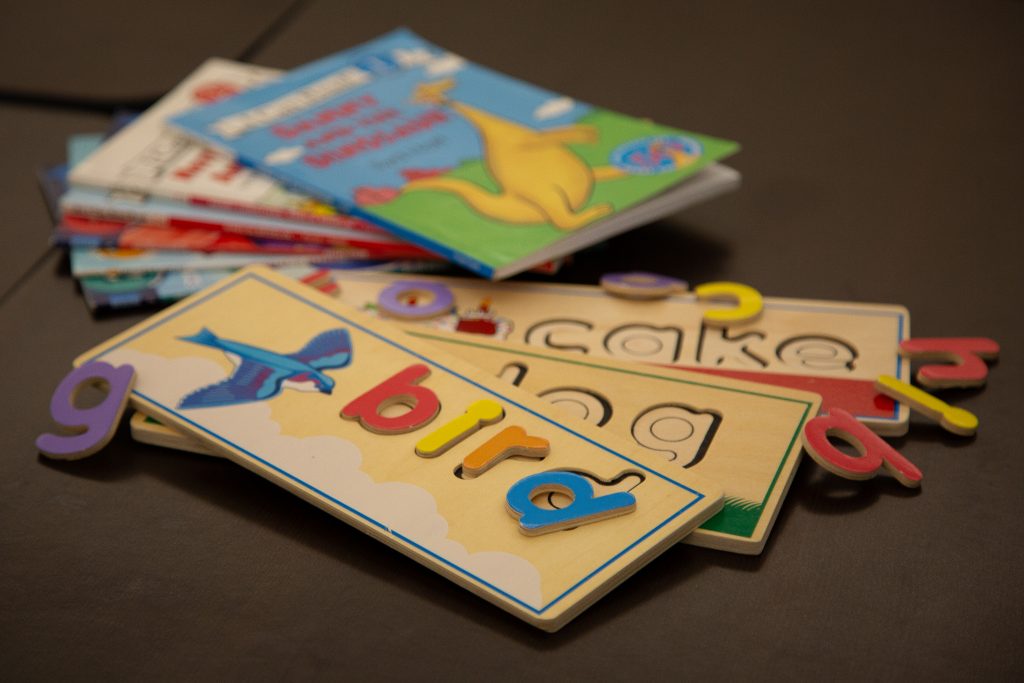Word gap can have lasting impacts on the most needy children
By Abigail Tuschman
Cooper City High School

When a 5-year-old starts screaming and biting during a playroom argument over an action figure, the child often is labeled “troubled” or “temperamental.”
But behind colorful alphabet blocks and glossy picture books, the preschooler’s tantrum might point to a larger problem, an insidious phenomenon known as the “word gap.”
“When a conflict arose in the classroom, [children with delayed speech development] didn’t always have the words or vocabulary to express themselves,” former preschool teacher Gina Gates said.
The “word gap,” coined by Kansas researchers Betty Hart and Todd Risley, describes dramatic differences in the vocabularies of children from different socioeconomic backgrounds. The researchers found there could be a gap of 30 million words by the time children reach age 3, a startling figure that inspired programs such as the Thirty Million Words Initiative and Providence Talks.
“You notice [a word gap] in children as young as 2 or 3 years old,” Gates said.
As many as 19% of children aged 2 to 7 might experience language delay, according to an article in the medical journal American Family Physician. The word gap observed in young children is closely tied to income inequality. Early language delay is much more common in children of low socioeconomic status due to fewer resources and more restricted learning experiences.
Six out of 10 American 4-year-olds are not enrolled in publicly funded preschool programs. Other options, such as private childcare, can be out of many families’ budgets. According to the Economic Policy Institute, the annual cost of child care for a 4-year-old in Florida is $7,668. The median household income in Florida is $50,883.
For those children in low-income homes, high-quality early childcare can be critical for speech development. An article by Lynn K. Perry, assistant professor of psychology at the University of Miami, said that preschools providing students with dense exposure to complex syntax and vocabulary can improve their language development.
One might assume that a child can “catch up” and overcome this word gap, but its effects are lingering. The oral language and emergent literacy skills acquired during preschool years are foundational for later literacy.
Delayed vocabulary development also can be an indicator of a child’s future academic struggles. If a child is a poor reader at the end of first grade, there is a 90% probability that they will remain a poor reader at the end of fourth grade, according to the former U.S. Commissioner of Education Ernest L. Boyer.
Julie Antilla, chair of undergraduate teacher education at Seattle Pacific University, argues that educators should ensure that students meet their grade-level achievement standards, no matter their vocabulary development, before starting school. But for teachers, this can seem like an unfair expectation.
“By the end of the year, I was expected to have all those children, regardless of how they came in, at the same level,” Gates said. “That’s a huge responsibility to put upon teachers. There needs to be collaboration between the home environment and the school environment. That education has to start at home.”
Speech therapists can teach parents how to foster their children’s speech development at home by speaking in a way that connects their experiences and vocabulary.
“I do a lot of work that is nothing but coaching parents,” said Wendy Nottoli, president of the Kendall Speech and Language Center. “We have to break things down at the child’s level and then build it back up.”
Some of that coaching includes telling parents to speak slowly, use detailed language to describe their surroundings and have back-and-forth conversations with their children.
“Just being able to learn how to talk to your child makes all the difference in the world,” Nottoli said.
Fort Lauderdale mother Kerin Mickenberg is an example of how active parental involvement can keep a word gap from developing.
Mickenburg would read books to sons Max and Sam every day and play games such as “I Spy” and “Mad Libs.” Instead of putting the radio or DVDs on for her sons in the car, Mickenberg would keep a bag of books for the boys to read in the backseat.
Though her sons’ preschool teachers noted their early literacy skills, Mickenberg didn’t expect the caliber of academic success the boys have achieved. Max and Sam today attend Dartmouth College and Duke University, respectively.
Inevitably, the high cost of childcare leads to different rates of preschool enrollment. Nationally, 61% of children from more affluent backgrounds are enrolled in preschool while only 41% of children from low-income families are enrolled.
To close the school readiness gap, the Obama administration established the Race to the Top Early Learning Challenge, a federal grant to improve early learning and development programs, and invested $1 billion in early childhood education.
President Trump’s administration is cutting funds to early childcare, proposing a 19% reduction in education spending on children in the 2019 budget.
While the 2020 budget proposes a 12% reduction in education spending, it also allocates $1 billion to support underserved populations and encourage employer investments in childcare.